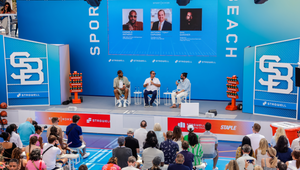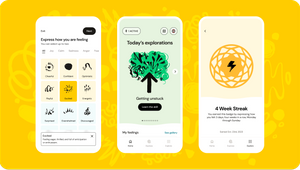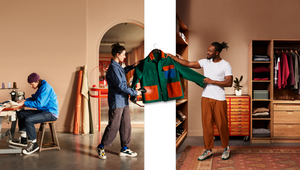
Saul Kohn: ‘No One Journeys Alone in Machine Learning Engineering'

Saul Kohn is an AI/ML solution architect at Code and Theory.
Q> What should clients be focusing the most on right now?
Saul> There are more machine learning and AI tools available to you than ever before. These represent incredible opportunities and open the doors to new ways of doing business. We can empower AI tools and methods strategically; with thoughtful, creative and robust data architectures, optimised for your needs - cost, speed, and precision.
But with these new possibilities, come new pitfalls. You need to differentiate between companies and teams approaching you that have innovative, new technologies, that of which are just vaporware. And some of which are just wrapping the good stuff, that you can get better value and control from at the source!
Okay, so you’ve selected your best value, best-fit tool. How do you use it? What are the best methods to extract the maximal value from it? The answers to these questions are a process of understanding how the underlying technology works. A deeper knowledge of how the data flows through them can help everyone better achieve their goals when implementing them.
A great technology agency (hint hint) can be a really helpful co-navigator here.
Q> What’s the best way to keep staff motivated and working at a high level?
Saul> Machine learning and AI projects are, at heart, scientific investigations. You’re trying to figure out if you can make a computer understand a pile of data at a deep enough level to enable it to start making inferences on new, unseen data. This can be a daunting task! So one of my strongly held beliefs is that 'no one journeys alone' in machine learning engineering (MLE).
What this translates into is fostering partnership. On any given project, I make sure that there are two MLEs. That way there is always someone to bounce ideas off of, reflect with and interpret results alongside. This also means that when presenting your results or reporting status, you’re never on the spot or holding everything alone. This is especially important when dealing with data: sometimes it just doesn’t let you do what you want to! It’s no one’s fault, but if you’re alone you can often fall into the mistake of blaming yourself.
Okay - so teamwork makes the dream work, but here’s something I hold in tension with the above: some of the best skills, confidence and learnings are built by giving individuals the autonomy to solve problems their own way.
The way I try to resolve this tension is to get to know my team members very well, so I know what they can do now and what they want to build towards. By doing so I can think very, very carefully about who is paired together on a project. In a perfect world, they’ll do 110% of what we need and teach each other a bunch along the way. In reality, if we get the best result for our clients and everyone learns just one new thing, I’m happy.
Q> What is unique about having a culture that is a balance of 50% engineers and 50% creatives?
Saul> I had been looking for Code and Theory for a long time before I found it. Finding links between what I do - mathematics, physics and computer science - with art and literature has always been a pet project of mine, and when I found a good connection, it was always a special delight. Now it’s kind of my job! How cool is that?! We’re talking about Large Language Models and Wittgenstein. We’re considering the Human vs. the Algorithmic Gaze. We’re thinking about Generative Imaging and what it means for artistic expression. You don’t get to have these conversations just anywhere: it takes a very special mix of technological and creative talent. I’m glad to be a small piece of it!
Q> What’s your biggest source of inspiration?
Saul> There’s a sense of awe I can reach by using mathematics to describe the world, that inspires me to dive ever deeper into understanding the workings of things. It’s a satisfying, beautiful cleanliness - a romantic notion of the work, I know - to use numbers and logic to create a working, mechanical system. I think it’s what drove me to do physics for my PhD, it’s definitely what made me fall in love with coding, and it’s a passion and an inspiration that I’m driven to share with all of my peers (and anyone who will listen!)
Our world is full of intricate and interwoven systems. The arrangement of cells, the hum of a crowd on 14th st., the fractal nature of a broccoli floret - all of these phenomena embody principles that can be translated into designs and algorithms. Not only can they, but they have been translated into designs and algorithms! This fusion of natural beauty and scientific inquiry not only motivates me to push the boundaries of what’s possible with computer science, AI, and machine learning, but also reinforces the importance of sustainability, harmony, and quiet observation in technological advancement.
Q> What’s the most exciting project you’ve worked on?
Saul> Last year I was part of a team that built a precision face-scanning mobile app for a medical device company. This thing had everything: machine learning in the frontend, machine learning in the backend, augmented reality to guide the user’s scan, 3D graphics - you name it. And at its peak, 30,000 monthly active users! Working in the overlap of all those different skill sets and technologies was a thrill and a joy. I actually try and encourage and broaden those fuzzy boundaries (between backend/frontend, creative/technological, AI/Human, … you get the idea), since I think it makes everyone cooperate more and generates better ideas. It’s fun to work in a place that encourages that encouragement.
Q> What is the one thing you’d tell your younger self?
Saul> Slow down. Pace yourself. Give yourself enough space to see the whole project. It lets you think more clearly about what you’re accomplishing in service of your work, or your client, or even yourself - rather than the singular component your gaze is on right now.















